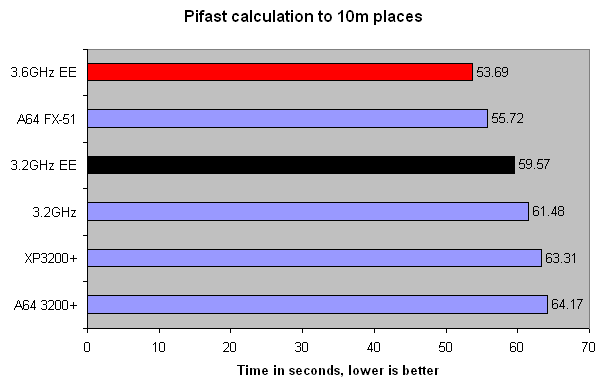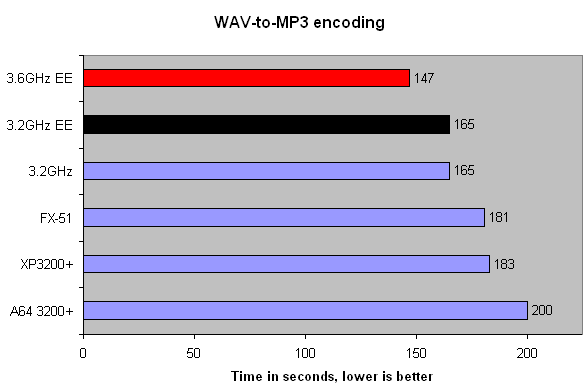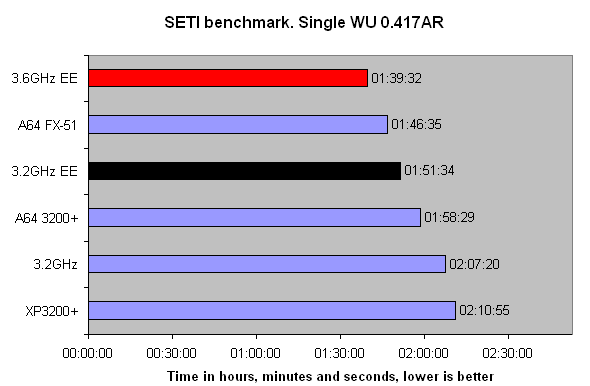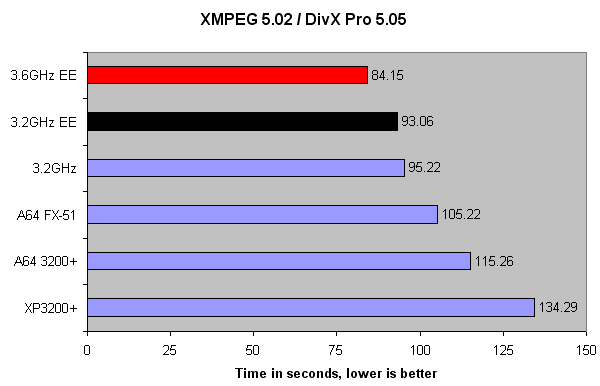Pifast, MP3 crunchin', DVD, SETI
Pifast is a decent indicator of either lower latencies or increased bandwidth, assuming a constant clock speed.

The Extreme Edition shaves almost 2 seconds from the regular 3.2GHz Pentium 4, and the overclocked 3.6GHz / 200MHz FSB / DDR400 E.E gets reasonably close to the 50-second barrier. Impressive stuff from the cache-laden beast from Intel. But let's remember that it needs 3.4GHz+ of clock power to overhaul the Athlon FX-51, running at 2.2GHz and with high latency DRAM.

Pure clock speed gives the EE an advantage. The extra cache doesn't play a major role here at all. That's what we were alluding to earlier. Not every single application will benefit, and there's only so much that a larger Level 3 cache can accomplish in pure computational tasks.

The story with SETI is quite different. Load up the large cache with the data set and watch the Extreme Edition churn the standardised 0.417AR work unit with over 15 minutes to spare when compared directly with its 3.2GHz brother. Low latency access, afforded by on-chip cache, gives the E.E a significant boost here. The 3.6GHz's time of 1:39:32 is the fastest yet seen at HEXUS.

Media encoding was undertaken with XMPEG v5.02. It chose the SSE2 optimisations for the P4 and both Athlon 64 processors. The test was to encode the first VOB of American History X using a bitrate of 1000kb/s. Benchmark mode was limited to the first 5,000 frames and no sound was encoded. Black borders were cropped too. The 3.2GHz Extreme Edition is fastest, as expected.









